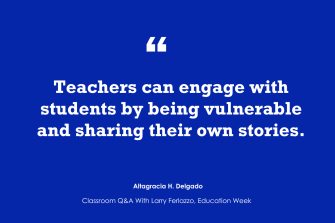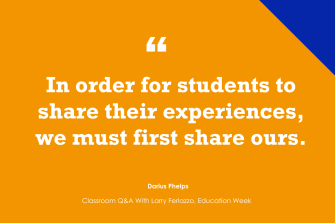As we speak’s publish wraps up a collection on classroom methods for supporting college students’ identification.
Creating ‘Protected Environments’
Altagracia H. Delgado, also called Grace, has been within the schooling subject for 28 years. She is at present the chief director of multilingual providers for Aldine ISD, within the Houston space. She can be an elected board member of the Texas Affiliation for Bilingual Training:
Culturally responsive educating is a research-based strategy to educating. It connects college students’ cultures, languages, and life experiences with what they be taught at school. These connections assist college students entry rigorous curriculum and develop higher-level educational abilities.
As well as, these lecture rooms are secure environments that present area for college kids to take dangers, make errors, and be taught new content material and language. The purpose for lecturers must be to deliberately plan for experiences which might be enriching to college students and validate them in addition to expose them to different experiences.
A technique to do that is thru using culturally responsive literature. Sharing tales which have similarities in linguistic and cultural experiences of our college students is a good way to start these educational connections. By having books accessible which have a mess of cultures and experiences, and integrating them into every day classes, lecturers can present college students with entry to cultures and experiences which might be just like theirs in addition to others’. That is necessary as a result of college students have to view characters in tales that appear to be them and are available from backgrounds just like theirs, doing actions which might be consultant of their cultures and backgrounds.
We frequently hear that “one can’t grow to be what one can’t see,” and books provide potential futures to our college students. Utilizing image books with culturally related tales and open-ended questions can present alternatives for structured conversations which might be participating and may nonetheless present rigorous studying of requirements, whereas additionally growing new languages.
Academics can interact with college students by being susceptible and sharing their very own tales in these open conversations. Moreover, by analyzing these tales with college students and serving to them journal their very own tales, lecturers present extra entry to writing requirements in scaffolded methods.
Lastly, one other method to assist lecturers make lecture rooms culturally responsive is thru the built-in use of visible arts actions. Because the thought of expressive language could be extra than simply talking and writing, permitting college students to make use of visible arts media like illustrations or collages can assist college students talk their studying in methods to advertise artistic pondering and problem-solving, whereas amplifying college students’ voice.

‘Author’s Workshop’
Alethea Maldonado Cavin is a secondary ESL instructor in Texas. She is coming into her ninth 12 months in schooling and he or she works alongside multilingual learners:
The primary 12 months I applied the author’s workshop into my classroom, our author’s workshop unit was youngsters’s books. I started by asking college students: Why is writing laborious (typically)? What do you want (typically) about writing? We then mentioned our personal current (multi)literacies, noting methods through which we converse, hear, learn, write, and create. We had been capable of make that distinction amongst formal and casual writing and writing within the digital world! We carried these literacies in our author’s pocket book.
We additionally explored what different writers do by analyzing youngsters’s books and exploring pocket book writing by authors themselves (like Frida Kahlo, Tupac Shakir, and Gloria Anzaldua) to previous college students’ notebooks. College students started to see that writing in a pocket book was a world with out restriction the place we are able to honor our personal language(s) and likewise play with language(s). I really feel constructing this basis earlier than precise amassing within the author’s pocket book is essential. This type of observe builds on the funds of information that our college students deliver to us after they enter our lecture rooms.
From there, we discuss by what we’d like as writers to put in writing our greatest: naming supplies we’d like (pen, pencil, mentor textual content?), the area we are able to thrive in (The place do I should be? Do I should be alone or have a writing peer close to?), and the atmosphere (lighting, music, sustenance?) that units the temper for the act of writing.
With all this in place, the writers are able to immerse themselves within the style of research. On this explicit case, we immerse ourselves in youngsters’s books of all kinds, figuring out the books’ themes, literary practices, photographs, languages, and particulars. We replicate on these collectively and we at all times come again to them as we acquire in our author’s pocket book.
When college students start amassing of their author’s pocket book, I at all times start with educating “writing territories” as a writing technique. Starting with this technique, college students can at all times come again to what they created as a financial institution of writing themes when getting began is tougher on some days.
From there, as their writing instructor, you rotate every day, educating a brand new writing technique (creating lists, internet map, reminiscence, writing a letter, creating questions, creating a comic book, beginning with a drawing, and so on.). The hot button is reiterating all through the mini-writing lesson that the technique you train is an “invitation” and that college students can select no matter technique they need for that particular day.
Amassing within the author’s pocket book is prime as a result of right here college students are exploring their writing and language repertoire. Right here, they’re constructing their writing fluency and exercising their capability to put in writing. College students acquire for a while after which transition into writing round a subject they preserve coming again to of their pocket book. From there, college students start designing their “textual content” for an viewers. The textual content could be a classroom anthology assortment, stapled collectively to be showcased to a selected viewers. The viewers could be a neighboring classroom or a youthful/older grade stage.
I feel it’s necessary to essentially take into consideration the group of which you’re a half and start to have your college students design their writing piece with that viewers in thoughts. In our classroom, our college students have written youngsters’s books to be later displayed on a classroom altar at an annual Dia de Los Muertos occasion, the place a whole bunch of “passerbyers” will work together with their writing. Planting the seed that an actual viewers will likely be studying their guide units off alarms of their brains as writers, and you’ll shortly see that they’ll take further care crafting their masterpieces.
Strategically, when college students are designing and drafting their writing piece, you’ll be able to train just a few revising and modifying educating factors, but it surely’s necessary to not overload your college students. Even within the author’s workshop course of, writing shouldn’t be good, and that’s OK. And eventually, at all times replicate, replicate, replicate. This is a superb alternative to your college students to observe metacognition and perceive themselves as dwelling writers and authors.
NOTE: After I train writing, my foundational teacher-mentor texts are the next: Randy Bomer’s Constructing Adolescent Literacy in As we speak’s English Classroom, Katherine Bomer and Corrine Arens’ A Instructor’s Information to Writing Workshop Necessities: Time, Alternative, Response, and Carla España and Luz Yadira Herrera’s En Comunidad.

‘We as Educators Should Be Open’
Darius Phelps is the assistant director of packages below the Middle for Publishing & Utilized Liberal Arts (PALA) division at NYU and is a supervisor at Brooklyn Poets:
To ensure that college students to share their experiences, we should first share ours, as nicely. We as educators should be open and sincere about our trauma, struggles, grief, pleasure, and successes to ensure that college students to put in writing and formulate their very own private narratives by no matter technique speaks to them. Our vulnerability will lead towards liberation of their very own respective experiences.

Because of Altagracia, Alethea, and Darius for contributing to as we speak’s publish.
Friends answered this query:
What are methods to encourage college students to inform their very own tales; to discover, write about, share about who they’re and what’s necessary to them? And the way do you develop a classroom atmosphere to make sure that pupil identities are supported?
In Half One, Crystal Watson, Kwame Sarfo-Mensah, Courtney Rose, and Erica Silva contributed their responses.
In Half Two, Jacquelyn Fabian, Michele Myers, and Angela M. Ward shared their solutions.
In Half Three, Jessica Wooden, Kristin Hoins, and Becky Corr wrote their solutions.
Take into account contributing a query to be answered in a future publish. You possibly can ship one to me at lferlazzo@epe.org. Once you ship it in, let me know if I can use your actual identify if it’s chosen or when you’d favor remaining nameless and have a pseudonym in thoughts.
It’s also possible to contact me on Twitter at @Larryferlazzo.
Only a reminder; you’ll be able to subscribe and obtain updates from this weblog by way of e mail. And when you missed any of the highlights from the primary 12 years of this weblog, you’ll be able to see a categorized record right here.
